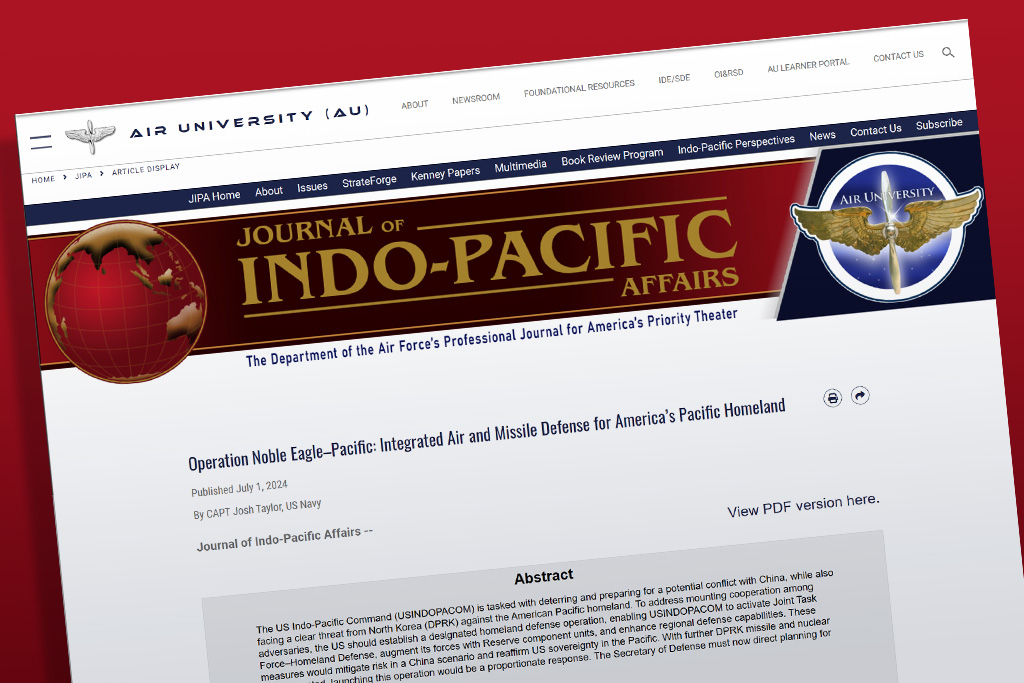China is conducting substantial research into both countering and developing hypersonic, precision-guidance, and boost-glide technologies, with the DF-21D and WU-14 weapon systems as just two recent examples, according Dr. Lora Saalman, Associate Professor at the Asia-Pacific Center for Security Studies. In her independent paper, “Prompt Global Strike: China and the Spear,” she states that the amount of this research, conducted by technical and military institutes in China, dwarfs that heretofore available on ballistic missile defense-related technologies. She argues that much of this Chinese research has been driven by and linked to such U.S. programs as prompt global strike (PGS) and ballistic missile defense (BMD).
According to Saalman, “Chinese analysts view PGS as part of a larger U.S. effort to achieve ‘absolute security,’ with BMD as the shield and PGS as the sword. The concept of U.S. PGS in China is wide and amorphous. It includes not only boost-glide systems and terminally guided ballistic missiles that make up the U.S. PGS program, but also reusable unmanned spacecraft and unmanned scramjets. Defunct or cancelled U.S. programs are featured in Chinese technical journals, on the grounds that U.S. military programs never truly end. Even in the face of Washington’s economic setbacks, Chinese analysts argue that U.S. PGS-related testing is already underway, particularly with hypersonic spacecraft. While Chinese authors tend to place PGS in the category of space weapons, they do not view it in isolation. Instead, they discuss its cyberspace and maritime application and vulnerabilities, as part of expanding cross-domain warfare research.”
“With the integration of strategic analysis and planning into technical research, China’s pursuit of hypersonic and high-precision weaponry promises to be faster and more focused than that associated with its previous anti-satellite (ASAT) and BMD-related research and programs,” writes Saalman. “Given how intensely Chinese analyses and programs focus on threats from the United States, it promises to be not only the driver of development, but also a primary target.” Saalman explores in her paper how to better understand these capabilities and mitigate the potential for them to drive Beijing’s posture and relations with Washington towards strategic instability.
“Prompt Global Strike: China and the Spear” is available here.
The Asia-Pacific Center for Security Studies is a Department of Defense institute that addresses regional and global security issues. Military and civilian representatives, most from the U.S. and Asia-Pacific nations, participate in a comprehensive program of executive education, professional exchanges and outreach events, both in Hawaii and throughout the Asia-Pacific region. The Center supports the U.S. Pacific Command by developing and sustaining relationships among security practitioners and national security establishments throughout the region. Its mission is to build capacities and communities of interest by educating, connecting, and empowering security practitioners to advance Asia-Pacific security.
Since opening in 1995, APCSS has had representatives from 104 countries and territories, and seven international organizations attend courses at the Center for a total of 8,380 alumni.
The views expressed in this article are those of the author and do not reflect the official policy or position of APCSS, the U.S. Pacific Command, the U.S. Department of Defense, or the U.S. government.
Lora Saalman is an associate professor at the Asia-Pacific Center for Security Studies. Her research focuses on China’s nuclear and conventional weapons and cyber security policies vis-à-vis India, Russia, and the United States. Dr. Saalman received her Ph.D. from Tsinghua University, her Master’s Degree from the Monterey Institute of International Studies, and her Bachelor’s Degree with Honors from The University of Chicago.
-End-










Leave A Comment